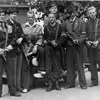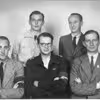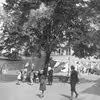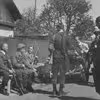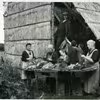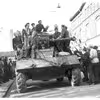Learn more about the Occupation
The Occupation of Denmark by Nazi Germany from 1940-1945 is one of the most dramatic periods in contemporary Danish history. The history of the five long years of occupation is, to a large extent, stored in Danish local and town archives, and a portal can be found through arkiv.dk.
Here, you can find archive material that tells the story of this monumental national event, but the material especially sheds light on local history from the time of the German attack on the 9th April 1940 until the liberation by the Allies on the 5th May 1945.
In particular, the Danish Resistance movement and its activities claim attention. The archives regularly receive requests from people for information on the resistance activities of a family member during the Occupation. People often know very little, as for many families, the Occupation years were shrouded in silence. After the Liberation in May 1945, for most members of the resistance, it was a question of moving on: unpleasant events were to be forgotten, and, therefore, family members rarely learned anything concrete.
Today, the generation that was active in the resistance movement is mostly dead. Their descendants can no longer go directly to the “source”. The possibility of learning about one’s grandparents’ role in the Danish Resistance seems to have disappeared.
However, in many archives, it is possible to find information on active members of the resistance. The information can, among others, be found in plenty of memoirs, personal archives, newspaper cuttings, literature on the locality and in the underground newspapers published during the Occupation.
It is also possible to find a great deal of information about the general living conditions and social life among Danes during the five years of Nazi-German occupation. A time of blackout curtains, curfew and rationing of goods taught Danes to be frugal, but also to be inventive. Twine was used to patch up punctures in bicycle tires, chicory was used as ersatz coffee and the cultivation of tobacco plants in Denmark took off from next to nothing when imports from tobacco-producing countries almost dried up. It was with the Liberation and the arrival of the British in May 1945 that life slowly returned to normal.
Explore arkiv.dk and read more on:
9th April
5th May
The Occupation
The Resistance
The Underground Press
Ersatz coffee
Tobacco cultivation
The Liberation
British soldiers

